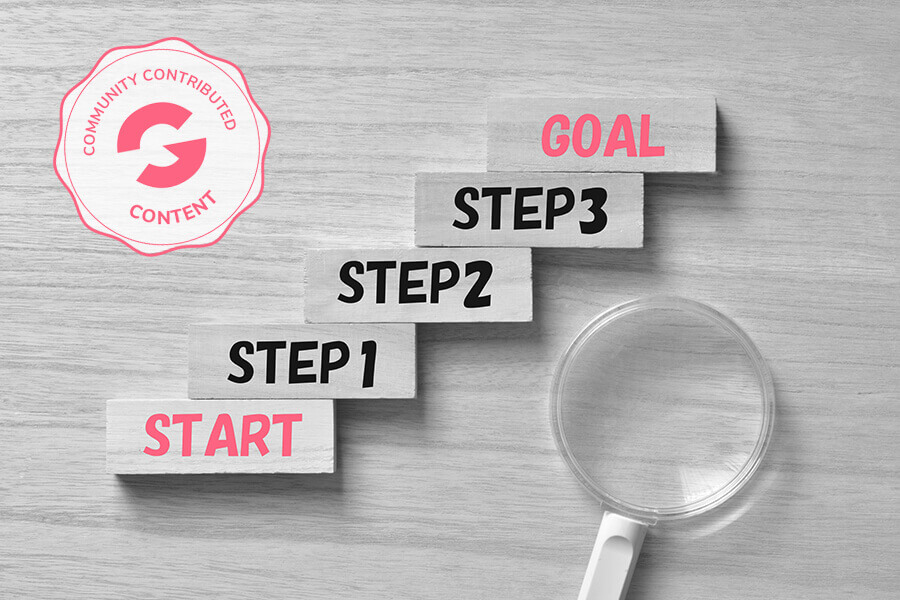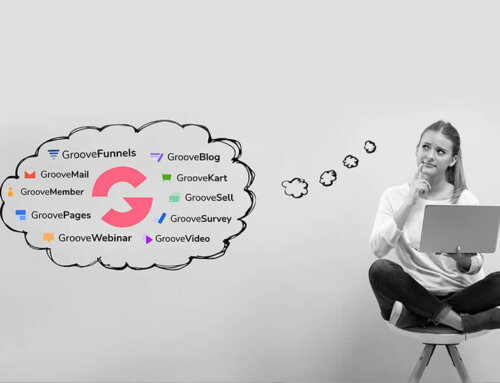Some folks say organic social media marketing is dying.
Let them think that.
The more people who don’t take advantage of organic marketing strategies on platforms like Facebook, Instagram, LinkedIn, and Twitter, the more room there is for the rest of us to work. So don’t share this article with anyone who might take action. In fact, I recommend you horde this knowledge. Many people charge anywhere from $7 to $5000 for the information you’re about to receive.
The truth is, organic marketing on platforms like Facebook and Instagram is one of the most used affiliate marketing strategies of 2020! It just requires a true understanding of how the platform you’re on works, and an honest desire to help others.
What is Organic Social Media Marketing vs Paid Ads?
This form of marketing is the practice of getting traffic, leads, or sales from social media platforms without paying for advertising. Now, there’s nothing wrong with paid advertising. I personally prefer it to organic social media marketing. But organic marketing is a powerful option which in some ways is even more targeted than any of social media’s most sophisticated advertising tools.
How to Get Started With Organic SMM
The first thing you need is a product to promote, and a funnel for capturing contact information and making sales. We’ll use GrooveFunnels as an example – you can build your funnel with GroovePages, capture information with GrooveMail, and promote GrooveFunnels as an affiliate. If you have your own product or service to offer, you can always provide that instead.
Once you’ve set up a free GrooveFunnels account and built a funnel to gather leads and advertise your offer, it’s time to dig into the marketing.
Step 1: Getting Started On Facebook
You probably already have a Facebook profile. How did I guess? Well, I’m not much of a gambler. According to their first quarter press release, they had over 2 billion active daily users in March 2020. Compare that to only 186 million on Twitter and you’ll start to understand how big Facebook’s footprint is on the social media map.
Because of that, I recommend starting with the big FB. Because of its massive popularity and easy-to-manage groups, Facebook can give you free access to almost any audience you might be targeting.
First, prepare your profile. Add a cover photo that teases your offer and a link to your funnel. Then, use the search feature to find groups in your product’s niche or area of interest. If you’re promoting GrooveFunnels as an affiliate, you might look for marketing groups, online business groups, sales funnel groups, and so on.
Once you’ve found and joined a number of groups, make sure you read and understand the rules. It’s best to start out adhering to them as closely as possible so that you can be taken seriously as a member of the community right away.
Note: Some groups have specific days on which you may share a link to a piece of content you’ve created or even to your funnel. I recommend making a spreadsheet or other type of calendar to keep track of these, as they are essentially free advertising.
Over time, do your best to create value in the groups you join by answering the questions people ask and sharing insights from your experience. This will naturally attract people to look at your profile and click on your link, or reach out to you via messenger. FB messenger is one of the most popular tools among organic affiliate marketers. You can also send people friend requests and messages first as long as the group doesn’t prohibit it.
Many people have used this simple method to generate thousands or even millions of dollars in sales, to both affiliate offers and their products and services.
Other Things To Do On Facebook
You can also create your own Facebook group and use it to communicate with, help, and present offers to your audience. Groups take quite a bit of time and energy to manage, but many marketers swear by their effectiveness. Also, once a group has grown it’s easy enough to outsource many of the administrative duties.
Making regular high-value posts on your profile and in your group is advisable, although not everything needs to be a “value post”. Many people will be equally as interested in your day to day life, and more likely to comment on less serious posts. It’s important to experiment and find what works best for you. Posting images can help improve your reach, as can videos and in particular live broadcasts.
Now, you can (and many people do) turn this type of organic marketing into your main source of income. I personally don’t advise that though, for two very good reasons: 1) If you lose your Faceobok profile for any reason, you’re out of luck, and 2) it’s almost impossible to fully outsource or automate. If you don’t mind never getting a real vacation and you like having all your eggs in one basket, sticking to pure FB organic is probably fine. But if you want to diversify, I have some solid recommendations…
Step 2: Progress To A Platform With More Permanence
The third problem I have with Facebook marketing is its impermanence. Most posts and even videos and lives will only show up in your followers’ timelines for a few days at most. While particularly helpful content will get looked up in groups on occasion, FB is really an in the moment platform when it comes to marketing.
At this stage you have multiple options, and unless you have some serious time to commit I recommend only expanding to one at a time. You can get started creating content on one of several platforms including Linkedin, Quora, Medium.com, and YouTube. Not all of those are technically “social media” platforms, but they count because they’re free to use and full of user generated content.
If you have a particular strength when it comes to video or writing, you may want to go with YouTube or Medium respectively. If you want to build your brand as much as possible, I recommend Linkedin. If you want as much authority and exposure as possible, Quora makes a logical choice.
All four of the platforms mentioned above allow at least one link in your profile. Depending on your strategy, you’ll either want to link to your funnel or your Facebook group. In most cases you can do both. Using a free link shortener such as Rebrandly will make this easier.
The rest is fairly simple. On Quora, answer questions. On YouTube post videos, and on Medium write articles. On Linkedin, you can do all three of those things. Use your content to communicate your knowledge and experience to your audience, but also to share your story with them. Once in a while, remember to recommend they follow your link to your funnel or group.
Note: It’s important to understand the rules of each platform, as well as the rules of the communities within those platforms. Spend some time reading through other people’s posts before you go all out with your own.
Step 3: Analyze Your Efforts and Scale
Once you’re experiencing some success, it’s time to refine your approach to maximize your results. This is where using a URL shortener and/or GrooveSell tracking links becomes key. You’ll want to find out exactly which pieces of content are generating the most clicks to your offers. With GrooveSell tracking links, it’s even possible to know which clicks convert.
Whatever your approach is, set up a system for understanding, analyzing and scaling your marketing efforts. This could be as simple as noticing which Facebook groups generate the most messenger conversations for you. It could be as complex as tracking clicks and conversions across multiple platforms.
You’ll know you’ve found the right place for your efforts when the same amount of work starts to yield 2x-10x the results it previously received.
As you grow, it may make sense to develop multiple funnels, or you may prefer to maintain most of your energy around a single core offer. GrooveFunnels is a platform full of possibilities, so whether you want to start an ecommerce store or sell coaching services, it will provide the tools you need.
 Alex is a digital and affiliate marketer who helps entrepreneurs build the business they envision online. He specializes in Search Engine Optimization and marketing strategy and enjoys helping companies of all sizes achieve their promotional goals. To find out more, or get help with achieving your promotional goals, take a look at his website.
Alex is a digital and affiliate marketer who helps entrepreneurs build the business they envision online. He specializes in Search Engine Optimization and marketing strategy and enjoys helping companies of all sizes achieve their promotional goals. To find out more, or get help with achieving your promotional goals, take a look at his website.





The biggest mistake people make is their lack of action to master any form of marketing. Paid ads, social media and organic, blogging, you name it… It all works. It just depends on people’s abilities and motivations to decide to master a platform or two. Great article – people need to focus and take massive action!
The only guarantee of failure is to never start. Great point! Thanks Jon.
Hello
Hey Audrey, thank you for being apart of the Groove family!